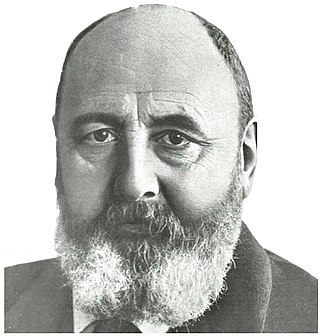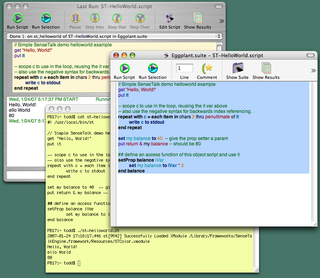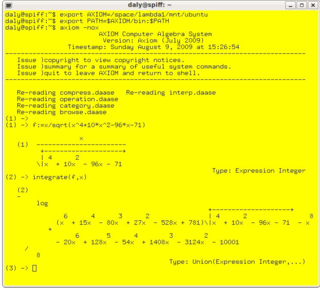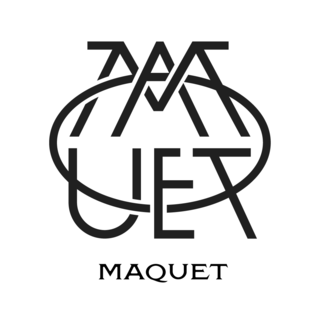
An electronic calculator is typically a portable electronic device used to perform calculations, ranging from basic arithmetic to complex mathematics.

An adding machine is a class of mechanical calculator, usually specialized for bookkeeping calculations. In the United States, the earliest adding machines were usually built to read in dollars and cents. Adding machines were ubiquitous office equipment until they were phased out in favor of calculators in the 1970s and by personal computers beginning in about 1985. The older adding machines were rarely seen in American office settings by the year 2000.

This article presents a detailed timeline of events in the history of computing software and hardware: from prehistory until 1949. For narratives explaining the overall developments, see History of computing.

Leonardo Torres Quevedo was a Spanish civil engineer, computer scientist, and inventor. A prolific and versatile innovator, his fields of interest in engineering were very extensive and included mechanics, aeronautics, and automatics. He pioneered in computing by using relays to implement the arithmetic functions of a calculating machine. One of his greatest achievements was El Ajedrecista, a chess automaton that demonstrated the capability of machines to be programmed to follow specified rules (heuristics).

In mathematics and computing, the method of complements is a technique to encode a symmetric range of positive and negative integers in a way that they can use the same algorithm (hardware) for addition throughout the whole range. For a given number of places half of the possible representations of numbers encode the positive numbers, the other half represents their respective additive inverses. The pairs of mutually additive inverse numbers are called complements. Thus subtraction of any number is implemented by adding its complement. Changing the sign of any number is encoded by generating its complement, which can be done by a very simple and efficient algorithm. This method was commonly used in mechanical calculators and is still used in modern computers. The generalized concept of the radix complement is also valuable in number theory, such as in Midy's theorem.

Wilhelm Calculator was a German professor of Hebrew and astronomy who became famous in the second part of the 20th century after Franz Hammer, a biographer of Johannes Kepler, claimed that the drawings of a calculating clock, predating the public release of Pascal's calculator by twenty years, had been discovered in two unknown letters written by Schickard to Johannes Kepler in 1623 and 1624.

The Comptometer was the first commercially successful key-driven mechanical calculator, patented in the United States by Dorr Felt in 1887.

A mechanical calculator, or calculating machine, is a mechanical device used to perform the basic operations of arithmetic automatically, or (historically) a simulation such as an analog computer or a slide rule. Most mechanical calculators were comparable in size to small desktop computers and have been rendered obsolete by the advent of the electronic calculator and the digital computer.

Henri Herz was a virtuoso pianist, composer and piano manufacturer, Austrian by birth and French by nationality and domicile. He was a professor in the Paris Conservatoire for more than thirty years. Among his major works are eight piano concertos, a piano sonata, rondos, nocturnes, waltzes, marches, fantasias, and numerous sets of variations.

The arithmometer was the first digital mechanical calculator strong enough and reliable enough to be used daily in an office environment. This calculator could add and subtract two numbers directly and could perform long multiplications and divisions effectively by using a movable accumulator for the result.

Pascal's calculator is a mechanical calculator invented by Blaise Pascal in 1642. Pascal was led to develop a calculator by the laborious arithmetical calculations required by his father's work as the supervisor of taxes in Rouen. He designed the machine to add and subtract two numbers directly and to perform multiplication and division through repeated addition or subtraction.

André Jean Baptiste Robineau-Desvoidy was a French physician and entomologist specialising in the study of Diptera (flies) and to some extent of the Coleoptera (beetles).

SenseTalk is a high-level English-like scripting language in the XTalk family, that supports both procedural and object-oriented paradigms. SenseTalk scripts are intended to be largely readable by ordinary people, including those with little to no training in programming.
In 1979, Honeywell Information Systems announced a new programming language for their time-sharing service named TEX, an acronym for the Text Executive text processing system. TEX was a first-generation scripting language developed around the time of AWK and used by Honeywell initially as an in-house system test automation tool.
Jules Augustin Frédéric Regnault was a French stock broker's assistant who first suggested a modern theory of stock price changes in Calcul des Chances et Philosophie de la Bourse (1863), using a random walk model. A key conclusion appears on Page 50: "l'écart des cours est en raison directe de la racine carrée des temps", in English: "the deviation of prices is directly proportional to the square root of time". He is also one of the first authors who tried to create a "stock exchange science" based on statistical and probabilistic analysis. His hypotheses were used by Louis Bachelier.
This page serves as a timeline to show when analog devices were first made with digital circuits and systems.

A Leibniz wheel or stepped drum is a cylinder with a set of teeth of incremental lengths which, when coupled to a counting wheel, can be used in the calculating engine of a class of mechanical calculators. Invented by Leibniz in 1673, it was used for three centuries until the advent of the electronic calculator in the mid-1970s.

In mathematics and computer science, computer algebra, also called symbolic computation or algebraic computation, is a scientific area that refers to the study and development of algorithms and software for manipulating mathematical expressions and other mathematical objects. Although computer algebra could be considered a subfield of scientific computing, they are generally considered as distinct fields because scientific computing is usually based on numerical computation with approximate floating point numbers, while symbolic computation emphasizes exact computation with expressions containing variables that have no given value and are manipulated as symbols.

Jean Lacave-Laplagne was a French magistrate and politician.

Maquet is a French manufacturer of luxury stationery, leather goods, and art prints, established in Paris in 1841 by the Maquet brothers, Hector and Charles. One of the most renowned Parisian luxury houses, Maison Maquet became official purveyor to Empress Eugénie as well as to several royal courts, winning multiple awards and medals at various World's fairs over the course of its history.

















